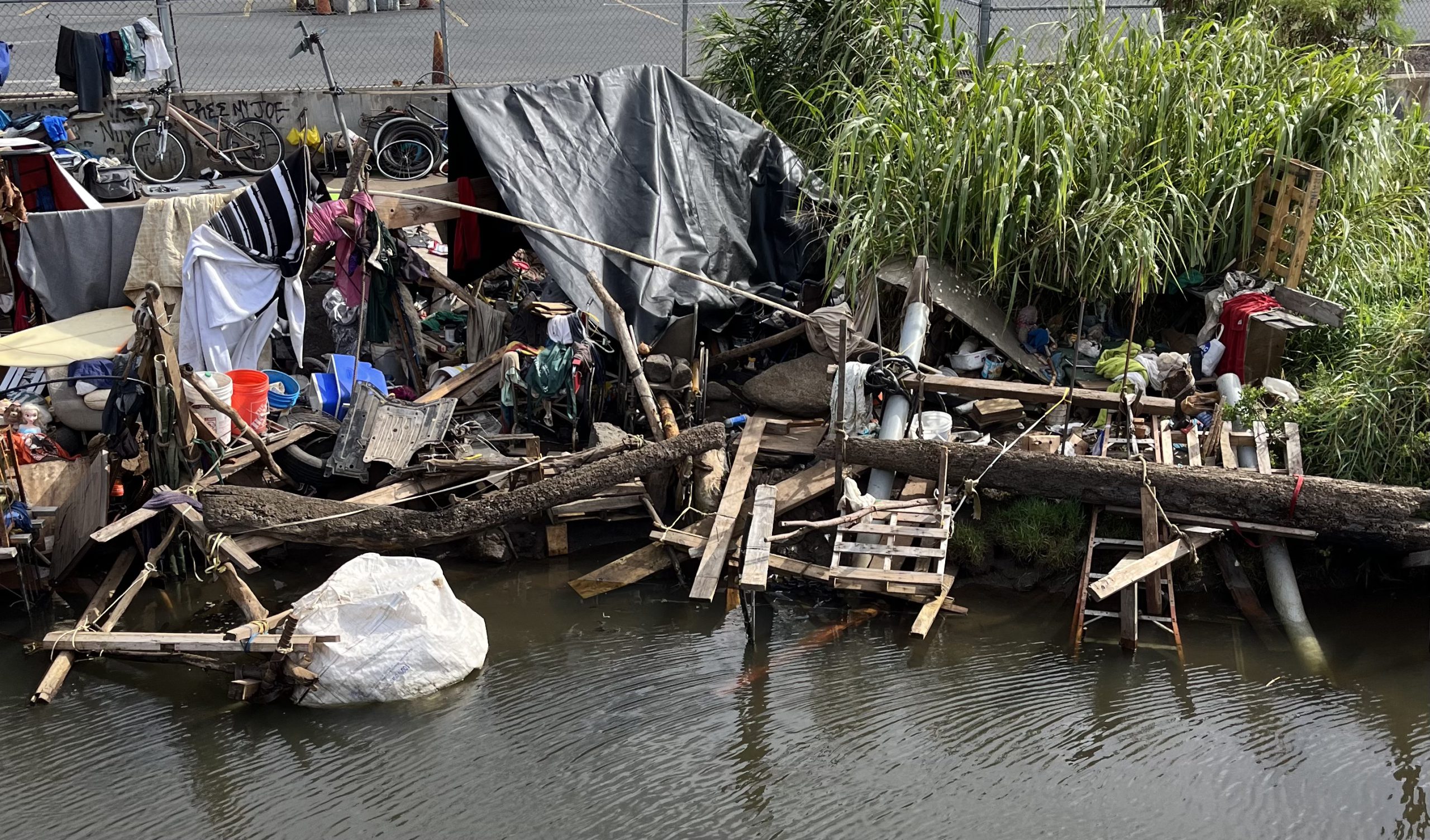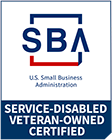Combating Homelessness

1. The innovation creator
Ponta Inc. (DBA Constructionplace.com) a California Corporation
VA Certifications: Service-Disabled Veteran-Owned Small Business and recertified by the Veteran U.S. Small Business Certification (VetCert) Program at SBA.
2. The innovation:
A Mobile Website that enables registered users to add vetting credentials, instantly plan/post projects with terms for getting service provider responses. Optional proprietary project management templates and tools with essential pre-construction and management information covering Planning and Resources, Costing and Contracting, Work Performance, and Making Payments. All supported with professional advice and affordable digital courses and training.
This innovation would be used to implement a homeless system response that addresses the range of issues that have resulted from racial inequity throughout the United States. This includes assuring affordable, stable housing for all, and transitional housing for the homeless and street veterans. Our solution uses our Constructionplace.com platform to build transitional shelter and lodging to mitigate homelessness in communities.
The innovation will be used to get homeless and street veterans off of public streets and save money for local communities throughout the United States.
Participating communities will purchase the completed projects from Ponta Inc. at cost plus 10 per cent or a reasonable negotiated amount. This would be a substantial cost savings to the communities because whenever possible building materials and equipment, and in some cases land and reusable structures, will be donated to complete the projects.
3. Access and Resident Support:
Easy registration and use 24/7
4. Breakthrough idea transformative:
This idea can make significant and lasting change to communities and the overall construction industry because of the cost savings realized by helping them go paperless when building construction projects. Our virtual tools enable us and Project Owners to find qualified vetted Service Providers; request quotes/proposals; get/negotiate bids; get professional advice/help; track Guarantees and Warranties; and easy project management for any size project. All of this transforms to more transparency which leads to better trust, productivity and overall cost savings.
5. How to execute this idea:
- We will build professional teams of community minded professionals to plan and design prototype homeless facility/shelter with essential amenities for temporary transitional living. These prototype facilities will be rolled out and constructed at various locations deemed appropriate by the prevailing local participating government agency(s).
- Whenever possible land will be provided by local governments or donated.
- All planning and design work will be performed by licensed professionals vetted and managed by Constructionplace.com.
- Whenever possible building materials and equipment for the projects will be donated by local businesses.
- Building construction labor is supervised by professional licensed contractors. And High functioning homeless can assist in the building process.
6. Milestones:
- Identify viable communities and get government involvement – Target Completion 3 months
- Build Design Teams in these viable communities to develop Prototype locations and designs – Target time 2 months
- Identify project locations – Time on going.
- Adopt the Prototype Designs by Local prevailing agencies – Target time 6 months.
- Get project financing (investors or donated properties) – Time 6 months.
- Acquire Project locations – Time 1 year.
- Roll Out the projects.
- The overall process continues.
7. Viability
This breakthrough idea is viable because it is a win win proposition for us, as developers, and the respective participating communities because we handle all of the work associated with the overall planning, design and construction of these facilities, and property procurement.
Furthermore, we will use local professionals to work on these projects. Our overall project costs will be substantially less than the traditional process because we will ask for donated building materials and equipment in exchange for project participation recognition. We will use occupational wages published in the U.S. Department of Labor whenever possible. These will be turnkey projects for actual project cost plus 10%. Any real-estate purchases such as land or reusable structures would be transferred at actual costs (no markup) including professional services necessary to complete the transactions.
8. Innovation Geography
Here are examples of costs incurred by local communities throughout the United States associated Homeless Data: The 2022 HUD Annual Homeless Assessment Report Data shows the Total number of people experiencing homelessness in the United States was 582,462.
| Sheltered | 348,630 |
| Unsheltered | 233,832 |
| Men | 352,211 |
| Women | 223,578 |
| Families with children | 171,670 |
| Unaccompanied youth | 34,210 |
| Veterans | 37,252 |
| Chronically homeless | 120,323 |
| Under the age of 18 | 232,985 40% |
We will create scalable prototype Designs to address these experiences and the site aesthetics will be scalable/updatable based on local ethnic conditions and requirements.
8. Initial Launch Areas
We have designated these locations to launch this idea because of the respective homeless mitigation annual Budgets and median locations:
| Los Angeles | $532 Million |
| San Francisco | $672 Million |
| Honolulu | $23.0 Million |
| Washington State | $100 Million |
| Chicago | $214 Million |
| Denver | $152 Million |
| New York | $2.1 Billion |
| Atlanta | $65 Million |
9. Launch Areas:
We would initially approach the above cities and respective state agencies with our idea. The design would be rolled out in all participating locations.
10. Benefitting Communities:
Homeless and Street Veterans; and Communities with homeless problems are the beneficiaries:
Many people aspire to the goal of living in a 400-square-foot apartment because it very easy to maintain and does not require lots of material items. Such small dwelling areas are very common in other countries; and studies shown that 100 to 400 square feet of space is ideal for most people if they’re living alone. Therefore, we would incorporate innovative organizational space saving features, energy efficient, maintenance free components in our design criteria. And whenever possible allocate a space for a garden area, limited or no automobile parking except for Administrative Staff, bicycle parking, and all onsite areas will be low or maintenance free.
11. Solving affordable housing needs and community-identified Priorities:
Provide a typical temporary transitional housing and support environment and to help the homeless and street veterans to become productive community members.
12. Challenges and Barriers:
Getting local government agencies to adopt this idea. We will solve this problem by providing a plan that can be easily rolled out in their respective communities to greatly reduce or eliminate costly expenses associated with the homeless and street veterans.
13. Creating Cost Savings and Available Recourses:
This idea would create cost savings to local government agencies because according to HUD over 582,462 people were experiencing sheltered homelessness, either staying in emergency shelters, hotel rooms or safe havens in 2022. This figure does not capture the number of people who are sleeping in places not intended for human habitation.
This idea would be using local professionals to help plan, design and construct these projects and help increase available resources by putting homeless people back into the work force and being productive society members rather than a financial drain on the community. Not to mention the overall facility building cost savings.
14. Creating time savings:
Constructionplace.com features and technology via the Internet.
15. Documenting and sharing to other Communities:
Internet, Social Media and Traditional Media
16. Integrating environmental sustainability and climate Resilience:
Paperless – go green.
17. Centering on racial equality:
The innovation has no racial barriers.
18. Professionals Needed:
Gary Westernoff, Founder and CEO of Ponta Inc., has over forty years of national planning, design and construction experience as an executive, consultant, educator, owner’s representative, and board member of Community Associations. With an architectural background Gary earned a bachelor’s degree in Construction Management and pursued executive MBA studies. He is a licensed General Building Contractor in California and Hawaii and is committed to helping to solve the homeless problem throughout the United States.
Ponta Inc. DBA Constructionplace.com is a California Corporation and Service-Disabled Veteran Owned Small Business (SDVOSVB) mobile web site used to prequalify Service, Material and Equipment providers for all projects. The business site technology is also used for Building Construction, Planning, Design and Management. This project is seeking:
- Architects/Engineers
- Real Estate Agencies
- General Contractors
- Other qualified service providers
19. Additional Partners Needed:
- National Alliance to End Homelessness
- Local food banks to provide food to the facilities.
- Local businesses to provide construction materials and equipment.
20. Public Segment Partners:
- Investors to purchase properties.
- Local Businesses to employ homeless from the facilities.
- Construction Lenders
- U.S. Small Business Administration (SBA)
- Applicable VA Agencies
21. Financial Support Requested:
$3 Million
22. Why this Financial Support is needed:
To pay for professional Teams until this project become self-sustaining. Here is a preliminary budget 3 year plan:
Year 1 Budget (Five high- level) $1 Million:
| Legal and Insurance | $10,000 |
| Marketing | $110,000 |
| Staffing | $360,000 |
| Professionals | $270,000 |
| Contingency | $250,000 |
Year 2 Budget (Five high-level) $ 1 Million
| Legal and Insurance | $10,000 |
| Marketing | $110,000 |
| Staffing | $360,000 |
| Professionals | $270,000 |
| Contingency | $250,000 |
Year 3 Budget (Five high-level) $1 Million
| Legal and Insurance | $10,000 |
| Marketing | $110,000 |
| Staffing | $360,000 |
| Professionals | $270,000 |
| Contingency | $250,000 |
If interested in developing this idea further contact us.




